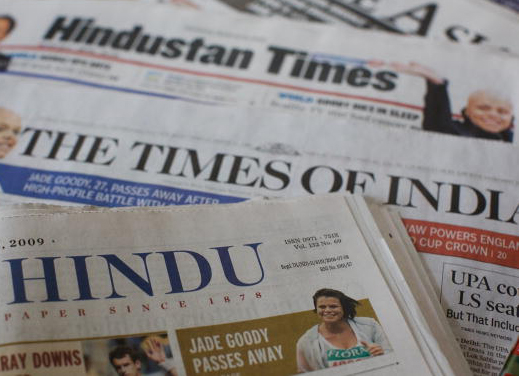
India to be top infrastructure goods importer by 2020: HSBC
India will topple the United States as the world's biggest importer of infrastructure goods by 2020 and is expected to hold this position till 2030, a report by HSBC said. According to the report, the demand for materials needed for infrastructure projects like metals, minerals, buildings and transport equipment is expected to increase as the country invests in building its civil infrastructure. The US is currently the biggest importer of infrastructure-related goods, but by 2020 India will become the lead importer of such goods as it invests in building its domestic networks and is expected to remain at the top of the chart till 2030, the report said. At present, the list of countries importing infrastructure goods is topped by the USA, followed by India, Hong Kong, China and Germany. By 2030, this is likely to undergo a sea-change as India will topple the US to become the largest importer of infrastructure related goods followed by the US in the second place and China, Hong Kong and Korea making into the top five. Asian economies will take an increasing share of infrastructure-related imports over the period, with Malaysia, Korea and Vietnam moving up the rankings.
(Source: Financial Express)
India may ease visa regime to boost tourism
In a bid to give a fillip to the tourism sector, the government on Monday initiated the process to offer the visa-on-arrival facility to a number of countries. Also on the cards are online applications from visa applicants and a proposal to provide Schengen-like convenience to Indian visa seekers. According to another senior Planning Commission official, there was a broad consensus in the meeting on liberalising the overall visa regime. The visa-on-arrival facility is proposed to be extended the US, the UK, Canada, Brazil, Australia, United Arab Emirates, Saudi Arabia, Germany, France, Italy, Sweden, the Netherlands, Switzerland, Spain, Belgium, Austria, Denmark, Poland, Norway and Ireland, among others. India already offers visa-on-arrival to Japan, Finland, Singapore, Indonesia, Luxembourg, New Zealand, Cambodia, Vietnam, the Philippines, Laos and Myanmar. One of the recommendations is to bring down the number of categories of visa from the existing 16 to just three. Foreign exchange earnings from tourism from January to August 2013 were $12.025 billion with a growth of 6.7 per cent, compared with $11.273 billion year-on-year.
(Source: Business Standard)
Chidambaram to woo FIIs, hedge funds in the US
Finance Minister P Chidambaram will woo foreign investors to invest in India as he begins his nine-day visit to the US on Tuesday. He will be in the US to attend the annual meeting of the International Monetary Fund (IMF) and the World Bank. The visit comes at a time when the US is facing a shutdown over the federal Budget and debt ceiling. Though there are no immediate fears of a flight of capital from the emerging markets as the Federal Reserve might not start tapering its $85-billion a month bond-buying programme till January, India would try to convince investors to stay invested in the country and get higher returns. As India’s foreign exchange reserves have dipped by $15 billion since March, to $276 billion as on September 27, the finance minister will meet foreign institutional investors and hedge fund managers in San Fransisco on October 14. He is likely to assure investors that the fiscal deficit and current account deficit this year would not breach the target of 4.8 per cent and 3.7 per cent of gross domestic product, respectively, and the economy was expected to grow at a higher pace after falling to a decadal low of five per cent in 2012-13 and expanding by merely 4.4 per cent in the April-June quarter this year.
(Source: Business Standard)
We are for trade-facilitation pact: India to WTO
A deal on further easing of global trade through tariff cuts and liberalisation of services trade may be off the WTO agenda because of the global economic crisis and the resultant protectionist tendencies in the West and elsewhere, but the new director-general of the multilateral trade body has got a shot in the arm as New Delhi on Monday said it was "in favour" of a trade facilitation agreement (TFA). A TFA will include binding commitments by member countries to harmonise the documentation as well as customs clearance standards and procedures among member countries in what could ease cross-border trade and reduce costs by 5-15%. India has so far been sceptical of TFA due to the high cost of putting in place foreign trade management infrastructure at its ports and making that available for multilateral scrutiny. The importance of TFA can be gauged from the fact that while average world tariffs are 5% ad valorem, trade (customs) costs are 10%. The current worlld cross-border trade is $18 trillion. According to a recent study, a multilateral deal on TFA could give a one-time boost to global GDP of $960 billion. Defending the food security law, Sharma said the legitimacy of that has been appreciated by all WTO members and the negotiators will find an acceptable solution to that. At the Bali ministerial, apart from TFA, one of the “Singapore issues”, other issues to be be discussed include Least
(Source: Financial Express)
Economic Section
Royal Thai Embassy















